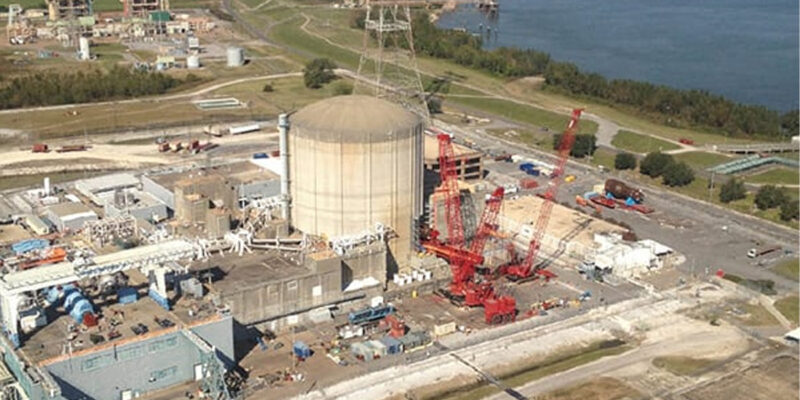(The Center Square) − Louisiana’s two nuclear power plants, which federal regulators rated as performing “within the expected range” in 2023, have spent much of the past year operating below full capacity or not operating at all.
At the Waterford 3 nuclear plant in St. Charles Parish, owned and operated by Entergy, the reactor has operated significantly lower than its generation capacity for much of the last year, according to Nuclear Regulatory Commission data.
The 1,250 megawatt plant generally hovered around 94% output (1,175 megawatts), but dropped much lower during several extended periods. According to the NRC, the facility, which went online in 1985, is unable to operate at full capacity because of a transformer limitation.
However, the site was completely offline for a total of 49 days over the past year — and has remained shut down since April 26 for maintenance that Entergy said in a statement was in preparation for summer energy demand.
In June 2024, Waterford ran at just 52% for five days, then dropped to 18% for another five before gradually climbing back to higher output levels. A month later, output suddenly fell from 94% to 12%, remaining below 20% for five days. In early December, the plant again went dark for a full week.
The state’s other nuclear facility, the River Bend Station in West Feliciana Parish, also saw significant downtime. Over the past year, the 1,010 megawatt reactor that went online in 1986 was offline for 54 days and running below 100% capacity for another 29 days.
These nuclear plant outages — both scheduled and unplanned — became a key factor in a May 25 emergency power shutoff that left nearly 100,000 Louisiana residents without electricity.
The regional grid operator, Midcontinent Independent System Operator, ordered the load shed after power supply could not keep up with unexpectedly high demand amid summer-like heat and storm damage to a major transmission line.
MISO, which oversees power delivery in 15 states and the Canadian province of Manitoba, on Monday told the New Orleans City Council that the load shed was a last-resort measure to avoid broader grid failure.
“We understand the actions we took were highly disruptive,” said Todd Hillman, MISO’s senior vice president of external affairs. “But they were absolutely necessary to protect the overall stability of the power grid.”
Critics of Louisiana’s energy policy say the May 25 event exposed deeper vulnerabilities in the state’s electricity system — particularly its reliance on aging infrastructure and lack of regional transmission planning in the MISO South region, which includes Louisiana, Arkansas, Mississippi, and a portion of Texas.
Though MISO manages grid operations, it doesn’t control where power cuts happen. That responsibility falls to local utilities like Entergy, which operates both Waterford and River Bend, according to the Alliance for Affordable Energy.
Entergy confirmed that one nuclear unit was already offline for scheduled maintenance when the second went down unexpectedly — leaving the system underpowered just as demand spiked.
Transmission bottlenecks exacerbated the crisis. MISO officials said electricity was available elsewhere in the region, but insufficient transmission lines into southeast Louisiana prevented that power from reaching local customers.
Advertisement
Advertisement

